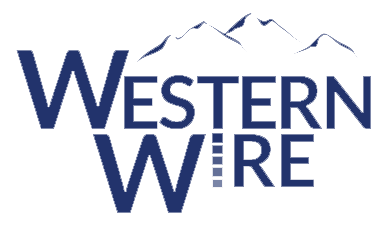As the Colorado oil and gas industry struggles to overcome a global oil glut and crashing prices, landowners and school districts that benefit from mineral royalty payments are feeling the pinch, too.
According to the Colorado Alliance of Mineral and Royalty Owners (CAMRO), mineral royalty payments to Colorado rightsholders totaled more than $500 million in 2019. CAMRO explains that most landowners with rights to minerals under their property receive modest monthly checks that held them to cover routine expenses.
“While mineral and royalty owners are often thought of as large entities, the truth is that the average mineral owner in Colorado receives a monthly check of around $500,” said Neil Ray, president of CAMRO. “These are people who rely on this money for a variety of personal expenses, including paying for college or caring for elderly parents. For many families, the loss of this income is devastating.”
Cristy Koeneke, one such mineral owner from Arvada, explained that royalty payments helped to pay her two sons’ college tuition and helped them to graduate without debt.
“Each monthly payment we earned went to Colorado State University and Metropolitan State University to pay for our children’s tuition and expenses associated with college courses,” she said. “Because of our mineral rights and the production on those lands, our sons were able to start their careers without a burden of debt. Now that our children have graduated college, we use the royalty payments to pay our mortgage during our retirement.”
CAMRO represents the interests of more than 600,000 mineral owners across the state of Colorado.
The loss of royalty monies could also be devastating to Colorado public schools. According to a review of education funding by the Colorado State Land Board in FY 18-19, Colorado’s public schools could lose over $125 million in funding if the pandemic and oil price depression continue.
Earlier this spring, the Department of Education released projected revenues numbers that predicted sharp declines in income and sales tax receipts, as well as mineral leasing revenues. In mid March, the Legislative Council Staff for the Colorado Joint Budget Committee released a report predicting a 5 percent decreased in education funding due to lower oil prices. The Colorado legislature has been shuttered for weeks under the state’s shelter in place order and has not been able to provide additional funding.
In addition to helping families and individuals, mineral development royalties are a key source of education funding in Colorado. The Colorado State Land Board owns nearly seven million acres of surface and subsurface land which it leases for mineral development as a means of generating revenue. The revenue generated from the leasing and development of these lands is used to fund public education in Colorado, either through the Colorado Department of Education’s Building Excellent Schools Today (BEST) program or the Public School Permanent Fund.
Established in 2008, the BEST program provides grants to school districts, charter schools, and other education institutions, including the Colorado School for the Deaf and the Blind to be used for the construction of new schools and to renovate existing school facilities. Since 2008, the program has awarded over $1.7 billion in grants, supporting improvements in public education and facilities for more than 180,000 students.
This year, however, the State Land Board is uncertain how much funding it will have to give needy schools. It concluded at a meeting in May by providing a list of prioritized projects, but admitted that “this grant round is unlike any other in the past because we do not yet have a definitive dollar amount to award projects.”
That decision leaves many Colorado school districts in a period of painful uncertainty. At stake are 67 school construction and renovation projects and nearly one billion dollars in BEST contributions and matching funds.
“Our communities rely on the mineral payments that we receive when natural gas and oil can be developed. This funding pays for safety equipment for first responders, best-in-class schools, community parks and recreation centers, and more,” said Bri Buentello, Colorado State House Representative and Education Committee Vice Chair, who added that quality schools frequently draw new residents to the area.
“Many of the very things that attract our residents to our communities are fueled by mineral and royalty payments,” she continued. “The decrease in our revenue due to the decline in the oil and natural gas markets has left a big budgetary hole that’s robbing our communities’ children of opportunity.”

